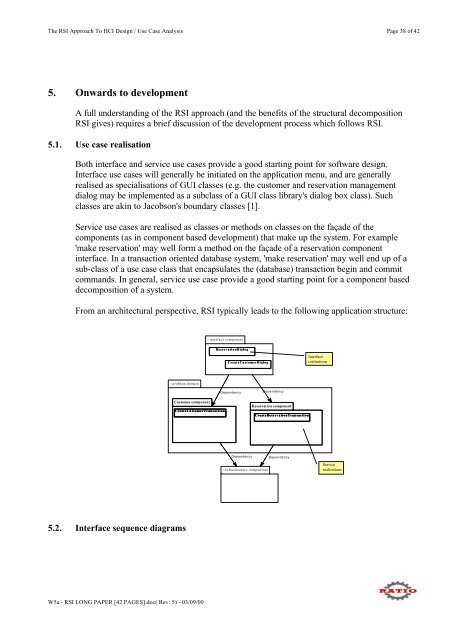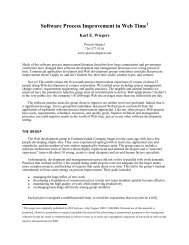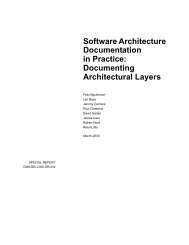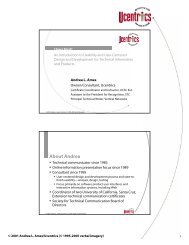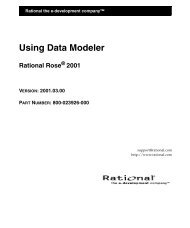RSI - A Structured Approach Use Cases and HCI Design
RSI - A Structured Approach Use Cases and HCI Design
RSI - A Structured Approach Use Cases and HCI Design
You also want an ePaper? Increase the reach of your titles
YUMPU automatically turns print PDFs into web optimized ePapers that Google loves.
The <strong>RSI</strong> <strong>Approach</strong> To <strong>HCI</strong> <strong>Design</strong> / <strong>Use</strong> Case Analysis Page 38 of 42<br />
5. Onwards to development<br />
A full underst<strong>and</strong>ing of the <strong>RSI</strong> approach (<strong>and</strong> the benefits of the structural decomposition<br />
<strong>RSI</strong> gives) requires a brief discussion of the development process which follows <strong>RSI</strong>.<br />
5.1. <strong>Use</strong> case realisation<br />
Both interface <strong>and</strong> service use cases provide a good starting point for software design.<br />
Interface use cases will generally be initiated on the application menu, <strong>and</strong> are generally<br />
realised as specialisations of GUI classes (e.g. the customer <strong>and</strong> reservation management<br />
dialog may be implemented as a subclass of a GUI class library's dialog box class). Such<br />
classes are akin to Jacobson's boundary classes [1].<br />
Service use cases are realised as classes or methods on classes on the façade of the<br />
components (as in component based development) that make up the system. For example<br />
'make reservation' may well form a method on the façade of a reservation component<br />
interface. In a transaction oriented database system, 'make reservation' may well end up of a<br />
sub-class of a use case class that encapsulates the (database) transaction begin <strong>and</strong> commit<br />
comm<strong>and</strong>s. In general, service use case provide a good starting point for a component based<br />
decomposition of a system.<br />
From an architectural perspective, <strong>RSI</strong> typically leads to the following application structure:<br />
::problem domain<br />
5.2. Interface sequence diagrams<br />
Customer component<br />
W5a - <strong>RSI</strong> LONG PAPER [42 PAGES].doc( Rev: 5) - 03/09/00<br />
::interface component<br />
CreateCustomerTransaction<br />
ReservationDialog<br />
CreateCustomerDialog<br />
Dependency Dependency<br />
::Infrastructure components<br />
Reservation component<br />
CreateReservationTransaction<br />
Dependency Dependency<br />
Interface<br />
realisations<br />
Service<br />
realisations


